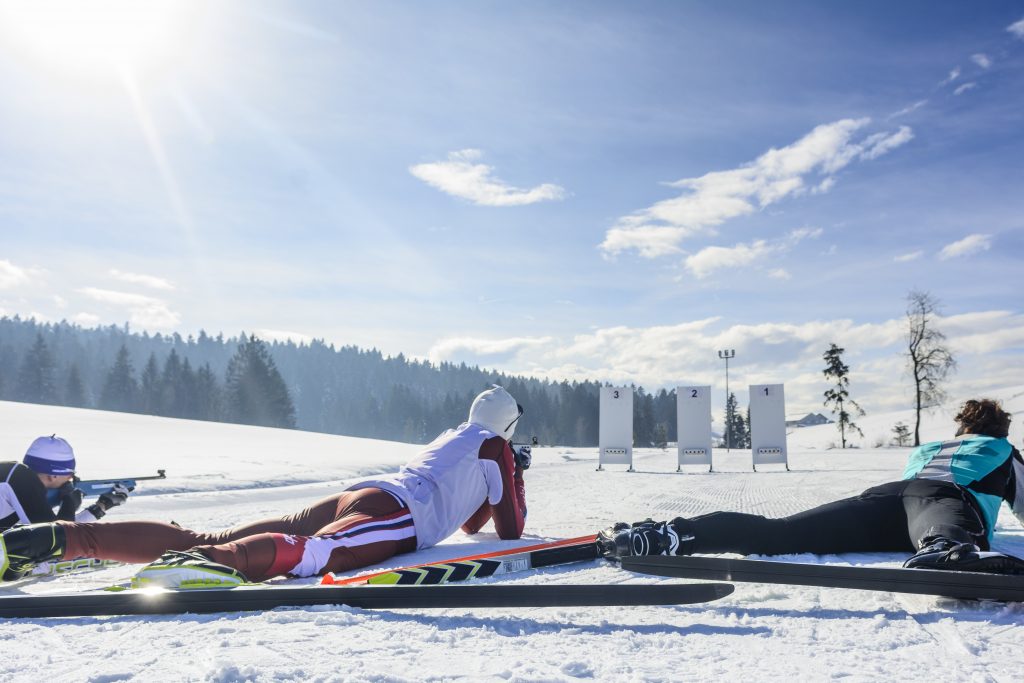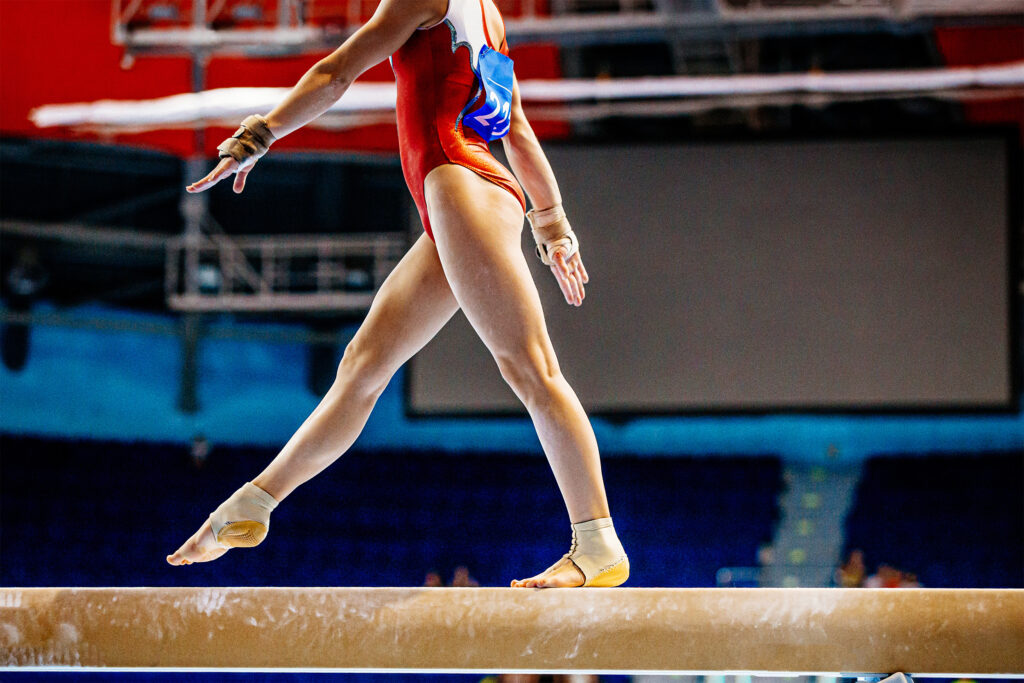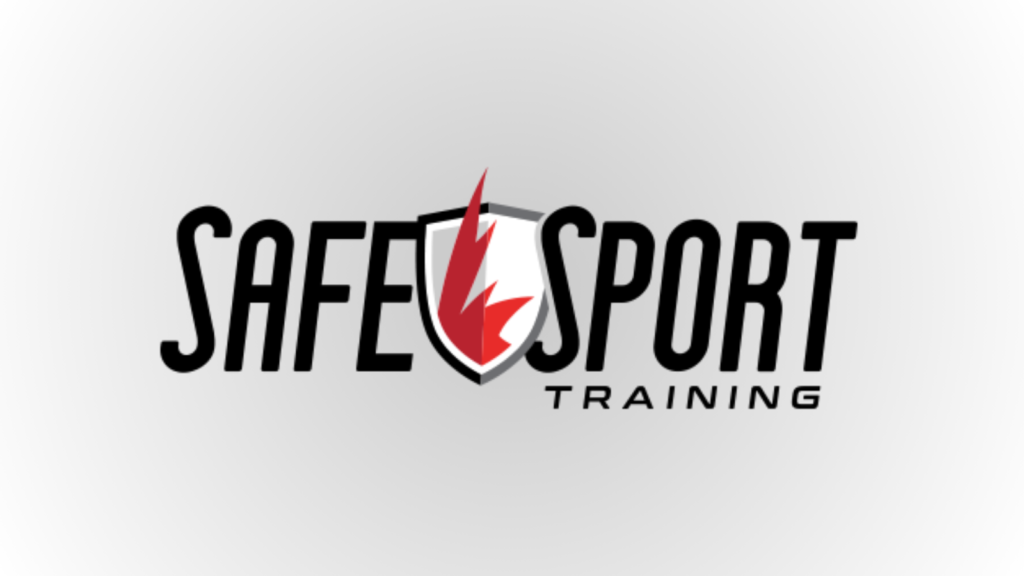Safeguarding
Safeguarding refers to efforts to create a sport environment that is safe and inclusive which protects participants from maltreatment as well as threats to sport integrity. Our resources are curated to support safe sport environments, where everyone has a role to play.
Search Safeguarding Resources
Top 10 resources
- Safe Sport and Safeguarding in Canada Literature Review
- Supporting Safe Environments for Youth in Sports Research Summary
- SCRI Panel: Panel: The future of safe sport
- Universal Code of Conduct to Prevent and Address Maltreatment in Sport
- Canadian Safe Sport Program
- SIRC Article: Match Manipulation and Gambling in Sport
- Overview of Competition Manipulation
- Overview of the Canadian Anti-Doping Program
- NCCP Creating a Positive Sport Environment Training Module
- NCCP Safe Sport Training Module

Featured resource
Natalie Durand-Bush and Krista Van Slingerland

Featured resource
Gretchen Kerr, University of Toronto

Featured resource
Coaching Association of Canada
Quick Facts
What are they key terms related to maltreatment in sport?
- Safe sport: Efforts to create a sport environment that is free from maltreatment, and optimizes sport experiences through promoting holistic development, respect, human rights (for example: safety, inclusion), and fun. Learn more.
- Maltreatment: A volitional act and/or omission that
results in harm or has the potential for physical or psychological harm. Learn more. - Prohibited behaviour: Conduct described in the Universal Code of Conduct to Prevent and Address Maltreatment in Sport (UCCMS), including but not limited to maltreatment.
- Disclosure: The sharing of information by a person regarding an incident or a pattern of Maltreatment experienced by that person, including a breach of reasonable boundaries. Disclosure does not constitute a formal Report. From the UCCMS.
- Reporting: The provision of information by a Participant or by any person to an independent authority designated by the Adopting Organization to receive Reports regarding Prohibited Behaviour. From the UCCMS.
What are the key terms related to sport integrity?
- Competition manipulation: “is a deliberate effort to influence elements of a sporting contest or its outcome, usually for financial gain.” From the Canadian Centre for Ethics in Sport.
- Canadian Anti-Doping Program: is the Canadian program, administered by Canadian Centre for Ethics in Sport “designed to prevent, deter and detect doping and serves to protect the integrity of sport and the rights of clean athletes.” From the Canadian Centre for Ethics in Sport.
What are they key terms related to mental health?
- Mental Health: “A state of psychological, emotional, and social well-being in which individuals are capable to feel, think, and act in ways that allow them to enjoy life, realize their potential, cope with the normal stresses of life, work productively, and contribute to their community” (WHO, 2022).
- Mental Illness: “A health condition characterized by alterations in individuals’ feeling, thinking, and behaving, leading to significant distress and impaired functioning in their personal and professional activities. It pertains to all diagnosable mental health disorders such as depression, anxiety disorders, schizophrenia, eating disorders, and substance use disorders.” Learn more.
What is the UCCMS & the Canadian Safe Sport Program (CSSP)?
- The Universal Code of Conduct to Prevent and Address Maltreatment in Sport (UCCMS) is a policy which was created to support the creation of quality, inclusive, accessible, welcoming and safe sport experiences, and propel the work towards creating sport environments that are free from maltreatment and ensure all sport participants are treated with dignity and respect. The UCCMS outlines prohibited behaviours for those working in a sport environment in an effort to prevent maltreatment.
- The Canadian Safe Sport Program (CSSP) is the program created to administer and enforce the UCCMS for Sport Organizations, by receiving and
responding to Reports of Prohibited Behaviour, and by developing and carrying out education, prevention and policy activities, including sport environment assessments. The Canadian Centre for Ethics in Sport (CCES) has been mandated to administer the CSSP.
Why is the athlete voice a critical part of safe sport environments?
A critical component to safeguarding sport is ensuring the athlete voice is at the heart of decision-making. This can be done formally through athlete commissions and athletes as board directors, as well as through ensuring athletes have choice and autonomy in their training. Autonomy supportive coaching refers to “a style used by coaches to support their athletes’ freedom, encourage their independence, and involve them in decision-making.” Learn more.
The Association of Canada’s National Team athletes, AthletesCAN, is the collective voice of Canadian national team athletes. It ensures an athlete-centered sport system by developing athlete leaders who influence sport policy and, as role models, inspire a strong sport culture.
Where is maltreatment, doping violations, or competition manipulation reported?
Reporting maltreatment can be done through the Canadian Safe Sport Program (CSSP). Reports can be made by phone or text to 1-866-971-2777. It is important to also check the safe sport resources specific to the sport organization for details on Independent Third-Party reporting options.
Reporting doping violations or competition manipulation can be done by contacting the CCES Integrity Hotline.
How does safeguarding impact interactions with sport participants and the coach-athlete relationship?
In addition to technical and tactical expertise, it is a coach’s responsibility to create a sport environment that is high quality, inclusive, accessible, welcoming, free from maltreatment and ensures all sport participants are treated with dignity and respect (UCCMS).
Optimal athletic performances (at all levels of sport) require athletes to move out of their comfort zones and sometimes this means the coach needs to encourage the athletes to do so. However, when challenging athletes, you must also support them (Fletcher & Sarkar 2016).
Safe Sport does not mean that coaches cannot encourage athletes to move outside of their comfort zones. What it does do is stimulate reflection on whether the coach takes control and ‘pushes’ the athlete, or leaves responsibility with the athlete by ‘encouraging’ the athlete and supporting them to make a decision (for example: autonomy supportive coaching). Learn more.
Safe Sport does not mean that coaches cannot develop a close, trusting relationship with their athletes. In fact, research on achieving optimal athletic performance cites the importance of having a close, trusting coach-athlete relationship (Jowett, 2017). From a Safe Sport perspective, such relationships can and should occur for wellbeing and optimal performance, but that relationship boundaries need to be maintained, and interactions, to the extent possible, should occur in open and observable spaces. Learn more about the Rule of Two from the Coaching Association of Canada.
What does it mean to create a safe sport environment?
A safe sport environment is one that is free from maltreatment, and optimizes sport experiences through promoting holistic development, respect, human rights (for example: safety, inclusion), and fun. There are several ways to create a safe environment, through coaching practices (see above), as well as education and awareness campaigns (for example: Tennis Canada Sport Safety Page).
It is also important to have strong policies and governance in place. For example, Volleyball Canada’s pan-Canadian Safe Sport policy has a strong policy alignment between the National and Provincial/Territorial Sport Organizations, and the Canadian-Anti-Doping Program.
How does safeguarding intersect with equity and inclusion in sport?
A key component to safeguarding sport is ensuring the sport environment is diverse, equitable, and inclusive, as research has shown athletes from equity-denied groups experience an increased prevalence of maltreatment (Gurgis et al., 2022). Pay attention to specific circumstances and needs of Women, Racialized, Parasport, and LGBTQ athletes, and take efforts such as using inclusive language and using accessible venues; as well as having zero tolerance for all forms of harassment, discrimination, and bullying.
Resources to support creating a safe sport environment for equity-denied groups include:
How does safeguarding intersect with athlete mental health?
It is important to create an environment that prioritizes athlete mental health and well-being. This includes improving mental health literacy through education, ensuring sport participants have access to mental health resources, and creating a psychologically safe environment that allows participants to speak freely without fear of retribution. Learn more.
Video Resources
Research Plenary: Curtis Fogel
- Brock University, Sport Nova Scotia, and SIRC
- 2023
The impact of mental health on concussion management
- York University and SIRC
- 2023
Experts Connect: Creating a Safe Environment for All Girls
- Canadian Women & Sport and Flags of Glory
- 2020
Sport North Coaching Mini-Series – Part 2: Being a Good Sport Parent
- Sport North, University of Toronto, and SIRC
- 2021
Radio Interview: Mom’s Got Game with Iris Lesser
- SIRC and Bell Media
- 2022
We Are Headstrong – Campaign Video
- SIRC
- 2019
Knowledge Nuggets
knowledge nuggets
Preventing and treating heat illnesses in a warming climate
With an increasing number of heat waves happening across the country, you may be more likely to experience exertional heat stress during the summer months.
With an increasing number of heat waves happening across the country, you may be more likely to experience exertional heat stress during the summer months. This happens when physical activity increases heat production, surpassing the body’s cooling capacity. Sport participants should be monitored for signs of heat stress to prevent severe illness and heat stroke.
knowledge nuggets
Spotting the hidden signs of burnout
New research found that athletes who feel like they’re not making progress or no longer value their sport are more likely to underperform—regardless of whether
New research found that athletes who feel like they’re not making progress or no longer value their sport are more likely to underperform—regardless of whether they are physically exhausted. These warning signs of burnout highlight the need for coaches and sport leaders to check in on athletes’ motivation, not just their physical load.
knowledge nuggets
Why clear definitions of maltreatment matter in sport
A recent scoping review led by researchers at the University of Toronto and University of Calgary shows that inconsistent definitions of athlete maltreatment are limiting
A recent scoping review led by researchers at the University of Toronto and University of Calgary shows that inconsistent definitions of athlete maltreatment are limiting efforts to prevent harm. By mapping 30 years of research, this work lays the groundwork for national tools to better protect athletes.
knowledge nuggets
Monitoring Athletes’ Mental Fatigue
Athletes are susceptible to mental fatigue, which can negatively impact both their physical performance and technical skills. Researchers found that mental fatigue in athletes varied
Athletes are susceptible to mental fatigue, which can negatively impact both their physical performance and technical skills. Researchers found that mental fatigue in athletes varied significantly during the pre-season and decreased as competition neared. Which means, monitoring athletes’ mental fatigue could help practitioners better tailor recovery strategies — especially during the pre-season.
knowledge nuggets
Athlete mental health challenges are gender specific
According to a recent study, female and male athletes experience distinct mental health challenges. Female athletes more frequently report anxiety, depression and disordered eating, while
According to a recent study, female and male athletes experience distinct mental health challenges. Female athletes more frequently report anxiety, depression and disordered eating, while male athletes are more likely to struggle with alcohol, drugs and gambling. Tailored strategies are essential to effectively support female and male athletes.
knowledge nuggets
Promoting mental health help-seeking in athletes
Seeking help for mental health can be difficult for athletes, and researchers are trying to understand why. According to one study, challenges that many athletes
Seeking help for mental health can be difficult for athletes, and researchers are trying to understand why. According to one study, challenges that many athletes face include limited access to mental health support and fear of judgement from others when seeking help. Having role models and teams that promote mental health can play an important role in overcoming these challenges.
knowledge nuggets
How parents can help their child cope with getting “cut”
Deselection, or being “cut” from a team, can be tough for young competitive athletes. Parents can help their child cope with being cut from a
Deselection, or being “cut” from a team, can be tough for young competitive athletes. Parents can help their child cope with being cut from a team by being positive and using the “console first, talk later” rule. Allow your child time to process their emotions for 24 to 48 hours before talking to them about it.
knowledge nuggets
Pain relief medication in elite athletes
An alarming number of elite athletes rely on pain relief medication to compete through injuries or enhance performance. Despite some caution about side effects, self-administration
An alarming number of elite athletes rely on pain relief medication to compete through injuries or enhance performance. Despite some caution about side effects, self-administration is common and can be influenced by coaches and medical staff.
More safeguarding resources
|
|
|
|
|
|
|
|
|
|
|
|
|
|